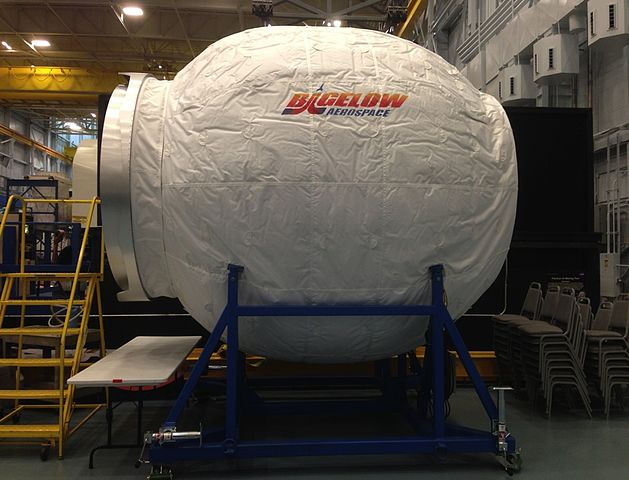SpaceX Delivers Bigelow Expandable Activity Module To International Space Station For Testing
I blogged last time about the success of SpaceX in landing a Falcon 9 first stage on a barge in the Atlantic Ocean. That was not their only recent "first." SpaceX has been shipping cargo to the International Space Station with their Falcon 9 launch vehicles and their Dragon spacecraft and they recently delivered a very special package to the ISS.
Construction of space station modules in space is complicated, time consuming and expensive. All materials have to be launched into orbit first which is costly. Then they have to be assembled by astronauts moving around in spacesuits which is complex and exhausting. Better ways have to be found to create habitable spaces for astronauts working on space stations.
NASA has been developing the concept of inflatable modular habitats since the 1960s. There was a TransHab project to create such a module in the late 1990s but the project was cancelled. The Bigelow Aerospace company purchased the NASA patents from the TransHab project and went on to develop their Bigelow Expandable Activity Module (BEAM), two of which were launched into orbit for testing in 2006 and 2007. NASA returned to consideration of inflatable modules in 2010. It reviewed a number of designs for attachment to the ISS including the BEAM. In 2012, Bigelow was awarded a contract from NASA to build the BEAM.
Last week, a SpaceX Dragon delivered a BEAM to the ISS. This expandable room with be temporarily attached to the ISS. It will not be deployed until May. The module will be part of the ISS for the next two years.
The purpose of the BEAM project is to demonstrate
· Launch and deployment of a commercial an inflatable module
· Folding and package techniques for an inflatable module
· Radiation protection capabilities of an inflatable module
· Performance of such things as thermal, structural, mechanical durability, and leak performance of an inflatable module
· Safe deployment and operation of an inflatable module
The BEAM is constructed with two metal bulkheads, an aluminum structure and multiple layers of soft fabric. It has an internal restraint and bladder system but no windows or internal power. It weighs three thousand pounds. It packs into a space about six feet long and about eight feet in diameter. When inflated, it will be thirteen feet long and ten feet in diameter. It will be pressurized to fifteen pounds per square inch is equivalent to the air pressure at sea level and the same as the ISS.
Astronauts will enter the module several times a year to obtain sensor data, check for microbial growth on surfaces, change out radiation monitors and check the module to see how well it can handle bombardment by space debris and solar radiation. NASA scientists have concluded that materials such as polyethylene with high levels of hydrogen can reduce radiation better than metals such as aluminum. The exact composition of the soft fabric in the BEAM is proprietary but it is known that they are using vinyl polymer foams in the module which are commonly used in laboratories for radiation shielding.
Bigelow Expandable Activity Module:
